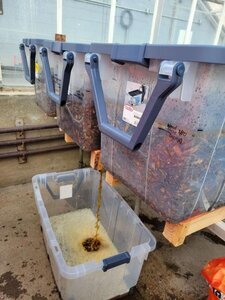
College of Engineering Unit:
In 1990 the Oregon Department of Environmental Quality (DEQ) declared the Lower Umatilla Basin a Groundwater Management Area (LUBGWMA) due to the high concentration of nitrate-nitrogen exceeding 7 milligrams per liter (mg/L). Nitrate is hazardous to human health when consumed in concentrations above the EPA standard of 10 mg/L (EPA, 2022). Many of the residents in the LUBGWMA depend on groundwater for drinking water and other household uses. These residents are located in rural areas of the region and do not have the financial means to implement expensive filtration technologies. There are also many elderly and physically impaired community members that require a treatment method with low maintenance. EcoFlow Engineering needed to design a treatment system to reduce nitrate levels to safe drinking water standards, have an adequate volume readily available continuously (at least 452 gallons/day), be low in cost, have a long lifespan, and that it requires minimal maintenance. The solution also needed to be accessible to all income levels and physically accessible to everyone to utilize.
EcoFlow Engineering determined five possible treatment alternatives for removing nitrate from the drinking water and decided to pursue a woodchip bioreactor since the ultimate goal is to eliminate nitrate from the system. A woodchip bioreactor uses the naturally occurring process of denitrification in soil to remove the nitrate contamination from water.
A prototype wood chip bioreactor was constructed to test the effectiveness of the woodchip bioreactor and determine the optimal retention time needed to remove enough nitrate to make the contaminated water safe to drink. Three prototype reactors were made from 40 gallon plastic storage tubs that were filled with 21 gallons of arborist wood chips. 15 gallons of nitrate contaminated water was treated by the bioreactors for 11 different retention times to test the optimal treatment time. Once treated, the collected samples were tested for nitrate concentration using a spectrophotometer. It was determined that a 12 hour retention time is necessary for bringing the highest contaminated water from 50 m/L to 7 mg/L or less.
More testing will need to be completed to explore the performance of a scaled up version of the prototype to ensure it is still as effective at removing nitrates. Additional water treatment systems will need to be added in addition to remove organic contaminants from the bioreactor and create safe drinking water for the residents of the Umatilla Basin.
| Attachment | Size |
|---|---|
| 886.21 KB |